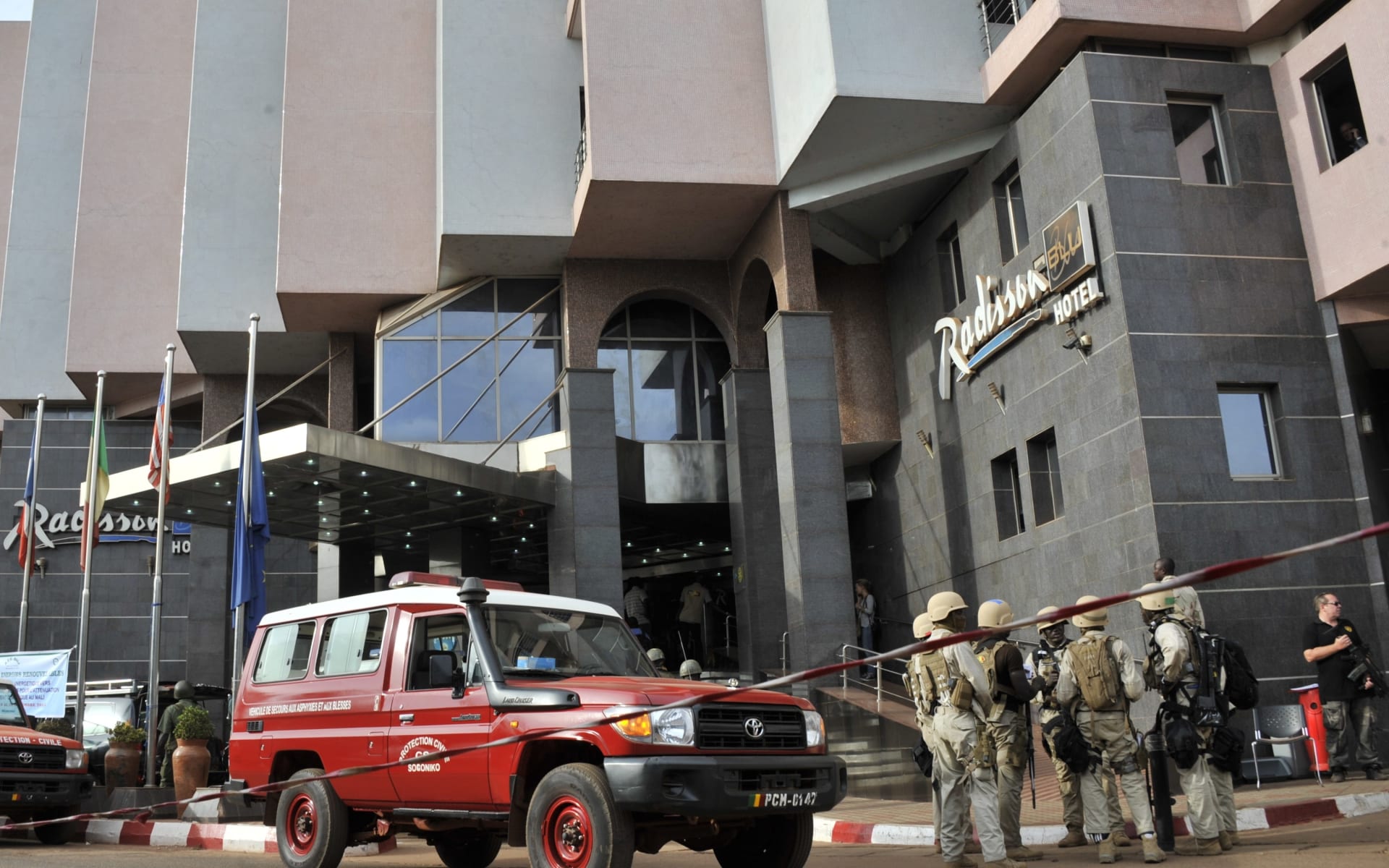مقال لبيتر بيرغن، محلل شؤون الأمن القومي بـCNN، ونائب رئيس مؤسسة "أمريكا الجديدة" وأستاذ في جامعة أريزونا الأمريكية، والمقال يعبر عن وجهة نظر الكاتب ولا يعكس بالضرورة رأي CNN.
أتلانتا، الولايات المتحدة الأمريكية (CNN)-- يُظهر هجوم، الجمعة، في فندق "راديسون بلو" بدولة مالي أن الإرهابيين مهتمون بشكل خاص بضرب أهداف ذات علامات تجارية أمريكية بارزة تخدم الغربيين.
وتخدم الفنادق مجال الضيافة ولا تستطيع أن تتحول إلى قلاع محصنة، في حين أن الفنادق التي تؤوي الغربيين، هي بطبيعة الحال هدف رئيسي لـ"داعش"، فضلا عن تنظيم "القاعدة" وفروعه. ويجعل هذان العاملان الفنادق هدفا جذابا بشكل خاص للإرهابيين الجهاديين.
من المرجح، للأسف أن تستمر هذه الهجمات على الفنادق ذات الأسماء التجارية الأمريكية والفنادق التي تخدم الغربيين في العالم الإسلامي، بسبب السهولة النسبية في وصول الإرهابيين إلى العديد من هذه الفنادق.
وتُهِم رمزية تنفيذ مثل هذه الهجمات الإرهابيين الجهاديين، إذ يرتفع في مثل تلك الهجمات احتمال قتل الغربيين، كما هو الحال مع هجوم الجمعة في فندق "راديسون بلو" في مالي، حيث يُهاجمون أيضا شركة فنادق دولية كبيرة ذات علامة تجارية أمريكية.
في عام 2003، فجر مهاجمون انتحاريون فندق "ماريوت" في العاصمة الإندونيسية جاكرتا، مما أسفر عن مقتل 12، وهاجموا مرة أخرى بعد ست سنوات، بالتزامن مع هجومهم على فندق "ريتز كارلتون" في العاصمة الإندونيسية مما أسفر عن مقتل سبعة أشخاص. وبالمثل، تم تفجير فندق "ماريوت" في إسلام أباد في باكستان عام 2008، مما أدى إلى مقتل 54 شخصا.
وقتلت مجموعة من 12 مقاول دفاع فرنسي في عام 2002، لدى مغادرتهم فندق "شيراتون" في كراتشي بباكستان، مما تسبب في ضرر كبير للفندق. وفي أكتوبر/تشرين الأول عام 2004 في طابا بسيناء في مصر، هاجم الجهاديون فندق "هيلتون"، مما أسفر عن مقتل 31 شخصا.
وفي عمان بالأردن، في نوفمبر/تشرين الثاني عام 2005، هاجم تنظيم "القاعدة" في العراق ثلاثة فنادق تحمل أسماء أمريكية معروفة، فندق "جراند حياة" و"راديسون" و"دايز إن"، مما أسفر عن مصرع 60 شخصا.
وبعيدا عن الفنادق ذات الأسماء التجارية الأمريكية، كانت الفنادق التي تخدم الغربيين أيضا هدفا دائما للجهاديين، مثل "تاج" وفنادق "أوبروي" خلال الهجمات في مومباي بالهند عام 2008، والتي قُتل فيها 166 في مواقع في جميع أنحاء المدينة. وتعرض فندق "سيرينا" في كابول بأفغانستان لهجوم في نفس العام، كما وقع هجوم آخر في "بيرل كونتينينتال" في بيشاور في باكستان عام 2009.
ويُذكر هجوم مسلحو "داعش" في الـ27 من يناير/كانون الثاني 2015، على فندق "كورينثيا" في العاصمة الليبية طرابلس، مما أسفر عن مقتل عشرة أشخاص، خمسة منهم كانوا أجانب، وواحد كان أمريكيا.
ويُمكن للفنادق الموجودة في البلدان التي قد ينفذ فيها الإرهابيون الجهاديون هجمات، القيام بعدد من الأشياء لمنع هذا النوع من الهجمات التي شهدناها في مالي.
أولا، يجب أن يكون هناك حراس أمن مسلحين فعالين يمكنهم التصدي للإرهابيين. وثانيا، يجب أن يستخدم الفندق نوعا من أجهزة الكشف عن المعادن التي تستخدم في المطارات، لفحص جميع الضيوف وعمال الفندق بعناية.
وثالثا، يتعين على شركات الفنادق النظر في أرجحية استهدافها ليس فقط من قبل الإرهابيين المسلحين بالأسلحة الآلية، ولكن أيضا من قبل السيارات والشاحنات المفخخة.
وإذا كان ذلك هو مصدر القلق الحقيقي، يجب أن تُبنى الفنادق بعيدا عن الشوارع، وينبغي أيضا أن تخلق محيطا من حولها حيث يتم فحص جميع السيارات التي تقترب من الفندق، من خلال استخدام الكلاب المدربة على شم المواد المتفجرة واستخدام الحراس أجهزة الكشف عن القنابل.
وبدون هذه التدابير، قد تتوقف الفنادق في البلدان التي لديها جماعات جهادية عن العمل بسبب قلق الضيوف بشأن أمنهم وسلامتهم.
